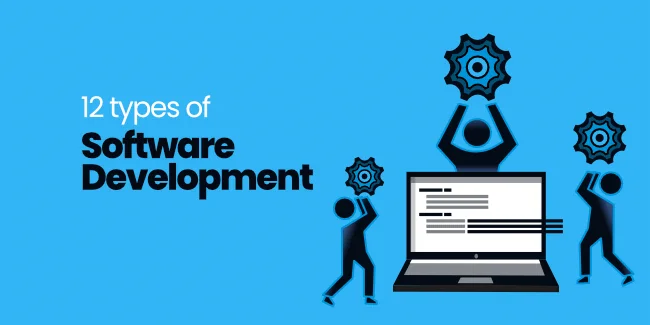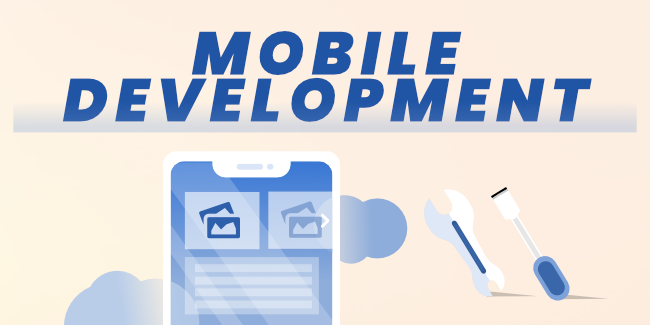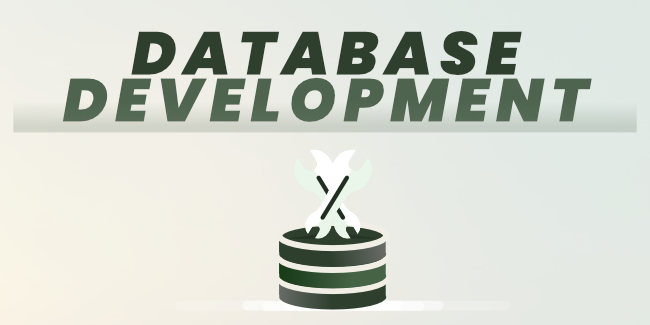12 Types of Software Development

You've probably seen a basic program saying "Hello World" or some other form; however, the variety of software creation is considerably more diversified. There are numerous types of software development, each with its own set of talents and mentality requirements.
Many of them may seem trivial and fairly obvious. Still, each of these types of software development has details that you need to be aware of. As a result, you'll be able to see where they meet and how they differ.
Finally, becoming an expert in software development will better equip you to hire software developers for your next project.
What is Software Development?
But first things first. As a reminder, let's briefly explain what software development is. It will create a context for the entire list of software development types, and its references will make much more sense.
Software development aims to develop computer software or code to solve a specific business or personal objective, aim, or procedure. Software development is generally a planned operation that comprises many phases or stages that result in operational software.
Frontend Development

Frontend development is the part of software development that is most available to the user. This type of software development is immediately perceptible to users since it includes the visual components of any system, application, or website.
Typically, frontend development entails the design and management of client-side behavior. A user interface is crucial for any software's appeal to end-users.
A user interface is a system for users to interact with by clicking, scrolling, and entering information. A user interface allows users to click, scroll, and provide information as they see fit when they choose. Users will effortlessly journey through your program thanks to an appealing visual appearance.
JavaScript, CSS, and HTML are crucial programming languages for web application development. However, there are significant differences between mobile application development technologies.
Graphic components, in addition to operating systems, web browsers, and many other software components, are required for their operation. Though different pieces of software have distinct compositions overall, frontend development is a crucial element in almost every type of software creation.
Backend Development

The term "backend development" refers to behind the scenes. It is because backend development comprises server-side behavior, which correlates to servers, databases, application programming interfaces (APIs), and other internal structures powering the software application itself.
Everything takes place behind the screen, where the frontend is an interface that abstracts away part of software development. A backend developer is a person who is responsible for the proper operation of not only this invisible zone for the user but also what the frontend has designed.
Users do not need to know the backend's inner workings to profit from it. Servers handle requests. User data and other vital information are stored in databases. APIs link software applications.
Backend development is possible in various languages and technologies, both inside and outside the realm of web programming. Ruby, Python, and Java are among the most well-known backend programming languages.
Full-Stack Development
At the end of the day, it's the user who decides whether or not a software program is successful. However, the backend makes certain that everything proceeds as planned.
Essentially, the backend and frontend collaborate to provide the ideal of both worlds. In that sense, full-stack development integrates the client-side and server-side software development process.
Full-stack developers are those who are skilled in both frontend and backend development. Most software projects should begin by considering that full-stack development is the objective.
Hiring a full-stack developer familiar with many technologies and knowledge of operating systems will save money on gratuities for such a specialist. In other words, if you are considering whether to tackle the frontend or the backend, think about trying both.
In this way, we ended the topic of which side we approach software development services. But when it comes to Frontend, Backend, or Full-Stack, there are still a lot of issues worth exploring. You can learn many interesting things from our article, our compendium of knowledge about the previously mentioned development sections.
Web Development
Web development is developing and maintaining websites, which includes everything that happens behind the scenes to create a beautiful, fast-operating website with a pleasant user experience.
Web developers accomplish this by utilizing a range of programming languages and programs. The languages they employ are determined by the sorts of work they do and the platforms they operate.
Web development expertise is in great demand worldwide, and it's also well compensated, making it a wonderful profession possibility. It's one of the simplest ways to get into higher-level work since you don't need a traditional education to become qualified.
Web development includes creating websites, web apps, and website interfaces for mobile devices.
Mobile Development

The obvious one is mobile development, or mobile app development is probably the type of software development you come across most often.
You've probably utilized social media on your smartphone with one of the numerous mobile apps available. You probably already know that mobile app development is the creation of applications that are used on mobile devices, such as smartphones and tablets.
The enormous popularity of smartphones creates requirements. And the market wants to meet these requirements in all possible ways. Note that almost every device in stores has a dedicated mobile app.
The fascinating aspect is that mobile development uses various software development tools than other software construction.
For example, an Android app needs Java or Kotlin code, whereas an iOS application requires Objective C or Swift.
Others choose a hybrid or cross-platform development to resolve mobile development challenges, which relies on a single toolset for multi-platform compatibility. However, there is a catch. Most software developers believe that native code development is more efficient than hybrid or cross-platform programming.
However, before judging, it is worth finding out precisely what cross-platform and native mobile development is. And a great way to do that is to read our articles "What is cross-platform development?", and "What is a Native Mobile App Development?". There is never enough knowledge, so be sure to check it out.
Application Development
It is one of the types of software development present in many others. In a nutshell, application development entails the development of any computer program or set of programs to accomplish a goal.
These are 'standard' apps work on traditional desktop operating systems, such as Windows, Mac, or Linux. It's frequently thought of as a program that the user activates on-demand and displays its interface within the OS's boundaries.
To develop an application, you have to go through a specific process so that nothing will surprise you and ultimately achieve success. You can experience an example of such a process by participating in our Discovery Workshop, where you will implement your application idea under the supervision of specialists.
Your training will consist of learning such process steps as:
- Team Gathering,
- Research,
- Ideation,
- Prototype,
- Idea Validation,
- And Refinement.
Moreover, you will learn how to maintain your app and what happens and what to do when it's launched. It does not matter if it is a mobile or web application. Each idea must be thoroughly researched and tested.
API Development
API Development, or the development of the Application Programming Interface, is the art of building something extensible.
Developers create programs like puzzle pieces for different embedded systems, ranging from desktop to mobile and the web. They allow third-party developers access to the tools or features of the API reference.
API development establishes a foundation for standard procedures, types, tools, GUI interaction models, and database access rules that other developers may use to create applications depending on an API.
Database Development

Database development is arranging and analyzing data in a raw format. It takes a significant amount of effort and expertise to put together and run data operations inside a firm's system.
Database Developers are also known as Database Programmers. They are responsible for creating long-term viable computer databases for any organization. It is essential for data security and process management in a balanced form and running business procedures.
A database may be used in various ways by individuals and corporations with considerable experience. Databases can store vast numbers of records efficiently (they take up little space). It's quick and straightforward to discover information.
It's simple to add new data, and old data can be changed or deleted. It's easy to find stuff in a database since it provides clarity when performing smooth business operations; otherwise, trust me on this one: you'll be doomed if you don't have a good database.
In today's modern world, a company's database and application infrastructure are critical aspects of IT. It should be noted that businesses are confronted with an ever-increasing number of difficulties in managing increasingly essential and expanding data portfolios while also satisfying corporate performance and accessibility expectations.
Embedded Systems Development
Embedded systems are computing systems that are built into mechanical devices. For example, a digital camera isn't what you'd consider being software development. But it is.
To provide digital camera features like picture storage, developers must put an embedded system into the device.
The majority of technology you encounter outside of your computer is almost certainly an embedded system. Embedded systems are also utilized in contemporary automobiles, smartphones, and even manufacturing equipment. You just learned the vocab term to identify these systems in everyday use.
Middleware, which refers to software tools that can work closely with hardware, is often required to create embedded systems. Hardware is the physical basis of computers and machines, while software is the interior programming.
Given that embedded systems are built-in mechanical hardware, middleware skills are essential for their creation.
Security Software Development
As the pace of modern software development quickens, more cyber attackers are exploiting it to exploit flaws in your code. Fortunately, you may take measures to secure your software development lifecycle and increase the security of your applications.
Securing an application can't be an afterthought in the software development process. To build a genuinely secure program, all aspects of the software creation cycle must be integrated with security procedures, from training to response.
A security software developer examines software applications and designs to identify and fix any potential security concerns. Their main goal is to safeguard the organization for which they work. A security software developer must integrate a thorough security analysis throughout each stage of software development to make this happen. The work of a security software developer cannot be underestimated because he, like a policeman, ensures that no data falls into the wrong hands. Creating good and effective security measures is always more complex than breaking in, so it's essential to know the importance of this activity.
Video Games Development

The software development industry will be around for a long time, and game design is one of the areas in which it will persist. Video game development software creation may require the input of just one person or a large group of people from all over the world.
Similarly, the time taken to create a video game depends entirely on how complex it is. Video games are computer programs that provide visual feedback to the user. Interactive software for PCs, consoles, and, more recently, mobile devices.
Since the beginning, video games have been a tremendously lucrative business with no sign of slowing down. With the growing popularity of smartphone games, the awareness of gamification has increased. We want to improve this awareness in our article "What is gamification? Guide".
Cloud Computing Development
The final point on our types of software development list is a technology that incorporates a variety of applications, such as Google Drive storage solutions and GitHub software tools.
Cloud computing is a term used to describe services, programs, and applications that run in the cloud. They have several advantages, including scalability. That implies they may be accessed practically anywhere with an internet connection and the appropriate login.
Some firms specialize in cloud computing, which involves the development of cloud platforms. They'll develop cloud apps and manage cloud services as well as provide maintenance to customers.
Conclusion
This post covered 12 distinct software development and the information you need to succeed. Getting your hands dirty in any of the above categories of software development will provide you with promising job possibilities, which should not be understated.
Are you interested in learning more about software development and whether it's the right path for you? Our specialists are here to help. We're delighted to offer you research and various types of helpful information.